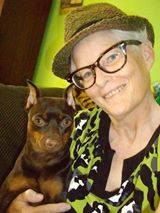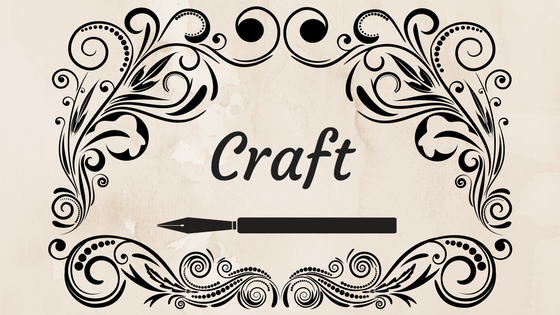by Lisanne Harrington
I’ve loved monsters for as long as I can remember. I even raised my kids on monster movies. We have a lot of fun quoting lines from such classics as Plan 9 from Outer Space (“Greetings, my friend.”); Young Frankenstein (“Hump? What hump?” ); Fido (“Timmy and I are going zombie.”); and even the new version of IT (“They pop. Pop, pop, pop!”). So you would think with a background like that, crafting my own monster would be easy.
But you’d be wrong.
It’s actually harder, because I’m so familiar with all the tropes and stereotypes that crafting something original—and believable—can be really difficult.
Originality vs. Reader Expectations
For example, the werewolf is such a recognizable monster, with its turning during a full moon, terrorizing and killing anyone it runs across, and only being killed by a silver bullet, you can’t veer too far off the norm or readers won’t buy it.
In Moonspell, Book 1 of my Wolf Creek paranormal mystery series, the killer is pretty much your standard werewolf, with the exception that it can’t help hunting humans as a result of the always fatal Moonspell virus, the werewolf equivalent of rabies.
That was a fairly easy one.
But at the same time, in Moon Watch, Book 2 of the series, I didn’t want the same old hairy beast that is so common, it’s predictable. I wanted something unique yet comfortably familiar, so I let the story dictate the werewolf’s personality. The character struggles with many of the same issues we’ve all grappled with: poor self-image, being bullied, a first love. Fretting over pimples and too much facial hair. Body odor stronger than most. And what would happen if the character’s secret was exposed?
Realistic Motivation & Emotion
The more well-rounded your creature is, the more believable it will be. Its motivations and emotions have to feel realistic. This doesn’t mean we should necessarily understand or agree with them. After all, most people have never committed murder, but murder mysteries have always been extremely popular.
And didn’t we feel just a touch of sympathy for Frankenstein’s monster?
If we can understand why someone might kill, we’ll believe they will kill. But if the author doesn’t show us something we can sink our teeth into, the character won’t ring true and we’ll toss aside the book and pick up the remote.
The struggle is real!
The same is even more true for a monster from your own mind. In Gravelings, I played off a common childhood fear: the Boogeyman. He’s the monster in the closet, under the bed, or lurking in the shadows, just waiting for the right time to drag us off to its lair, never to be seen again. Since everyone’s Boogeyman is different, I used this as a jumping off point. I wanted something terrifying that would scare the bejesus out of my readers. So I started thinking about the things that scare me. (I would tell you what those things are, but then I’d have to kill you. ☺)
Once I had that figured out, I thought about what a graveling would look like. While they would all have similar characteristics, just like humans do, each creature would have a slightly different appearance—a Mohawk. Stubbly chin. Bulbous nose—and a distinct personality. One was bossy, one giggled constantly, one liked to hide in the shadows, waiting for the opportunity to leap out at a human.
After I finished deciphering all that, I needed to understand their past. This is important because if you don’t know where a character comes from, you’ll have a hard time figuring out where they’re going. When I created the gravelings, I gave them an intricate backstory involving a Victorian mansion and a mad scientist.
What you have to remember is that while you as the creator need this background, the reader does not. Or at least, not all of it. You have to fight against that all-too-long, all-too-boring information dump. Weave in just enough history so that your monster makes sense, without letting it overwhelm the story. To paraphrase Elmore Leonard, you should leave out the parts readers skip.
Three-Dimensional Monsters
Much like crafting human characters, be they the good guy or the villain, your monsters must make sense. They have to have reasons for the things they do. They have to have personality. And they have to have some kind of history.
When working with a creature everyone knows and loves, it’s critical to develop your own take on the beast so that it stands out. Know your tropes and stereotypes and work with—and around—them.
The same holds true when you develop your own monster. The only differences are that you have to create more visuals so that the reader can see your creature and believe in it, and it’s always a good idea to let the story help you shape the monster.
After all, crafting a well-written story with three-dimensional characters, be they human or monster, is what will keep your readers turning the page.
It’s all about suspending disbelief, right?
Check out my Monsters blog for inspiration on crafting your monster, or if you’re just in need of a fun read!
***
 After sixteen years as a paralegal, I staged a coup and left the straight-laced corporate world behind forever. I now pander to my muse, a sarcastic little so-and-so who delights in getting the voices in my head to either all speak at once in a cacophony of noise or to remain completely silent. Only copious amounts of Diet Cherry Dr. Peppers and hamburgers will ensure their complicity in filling my head with stories of serial killers, werewolves, and the things that live under your bed.
After sixteen years as a paralegal, I staged a coup and left the straight-laced corporate world behind forever. I now pander to my muse, a sarcastic little so-and-so who delights in getting the voices in my head to either all speak at once in a cacophony of noise or to remain completely silent. Only copious amounts of Diet Cherry Dr. Peppers and hamburgers will ensure their complicity in filling my head with stories of serial killers, werewolves, and the things that live under your bed.
I live in SoCal, in the small town I fashioned Moonspell’s Wolf Creek after, with my beloved husband and persistently rowdy, always-has-to-have-the-last-word Miniature Pinscher, Fiona.




Interesting article! You make some great points about making realistic, three-dimensional monsters. And I agree, it’s such a fine line, if you’re writing a known monster, between hewing to readers’ expectations but also putting enough of a spin on it to make it interesting. I have creatures in my world who were originally based on orcs, but I ended up changing them so much that I changed their name too, to keep readers from expecting something that wasn’t what I was giving.
Hi Joy! That’s a great point. Meeting reader expectations (or not) is such a fine line to walk. I can’t wait to read tote stuff!
Hi Lisanne! Thank you for a great post. It’s a great reminder that even the bad guys and secondary (sometimes even tertiary) characters need motivation and backstory.
Fun read! I’ll be watching Tim Burton movies with a different slant now. I’m glad you mentioned Frankenstein. Contrasting the ccreator and his creature should make us wonder which was the real monster.